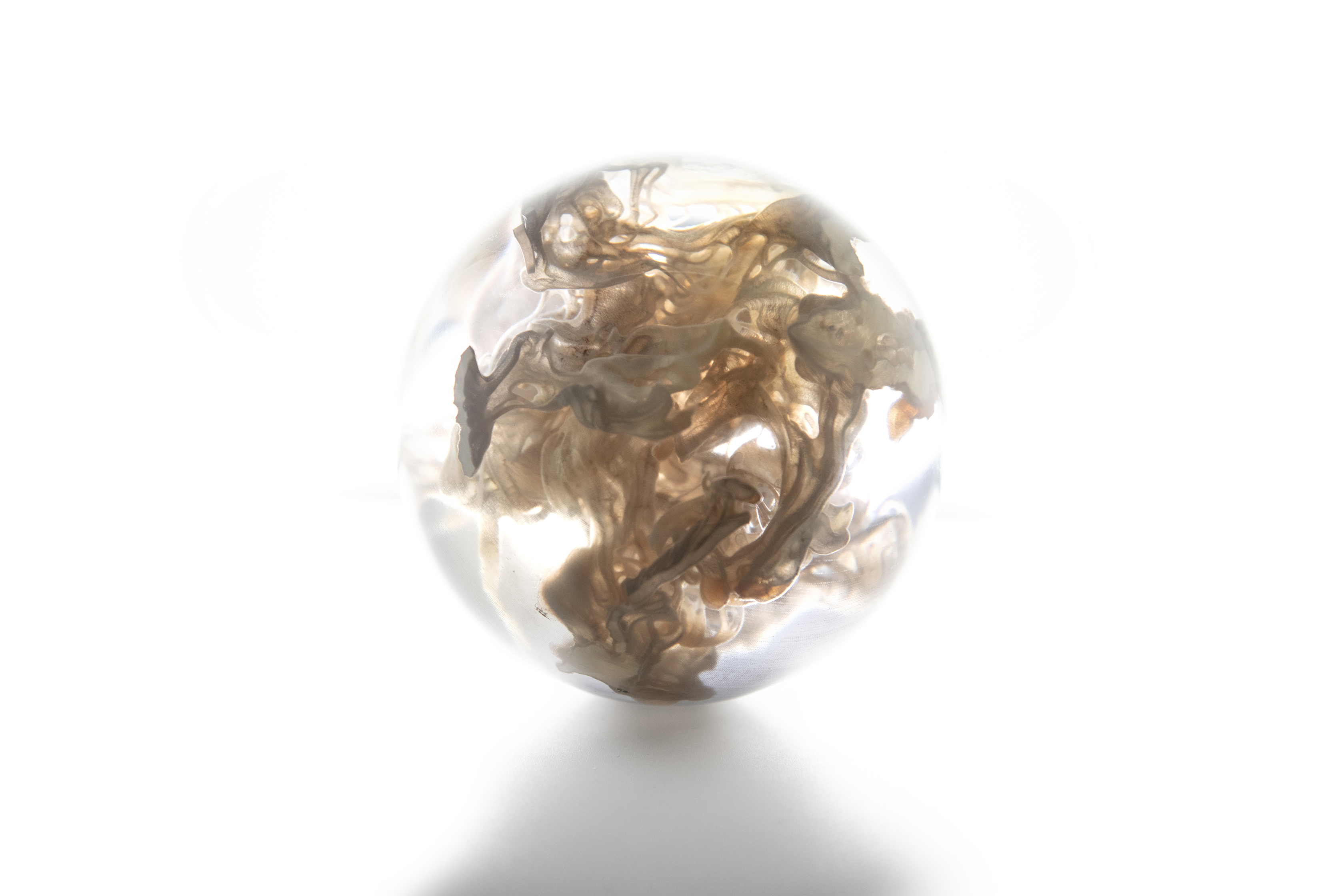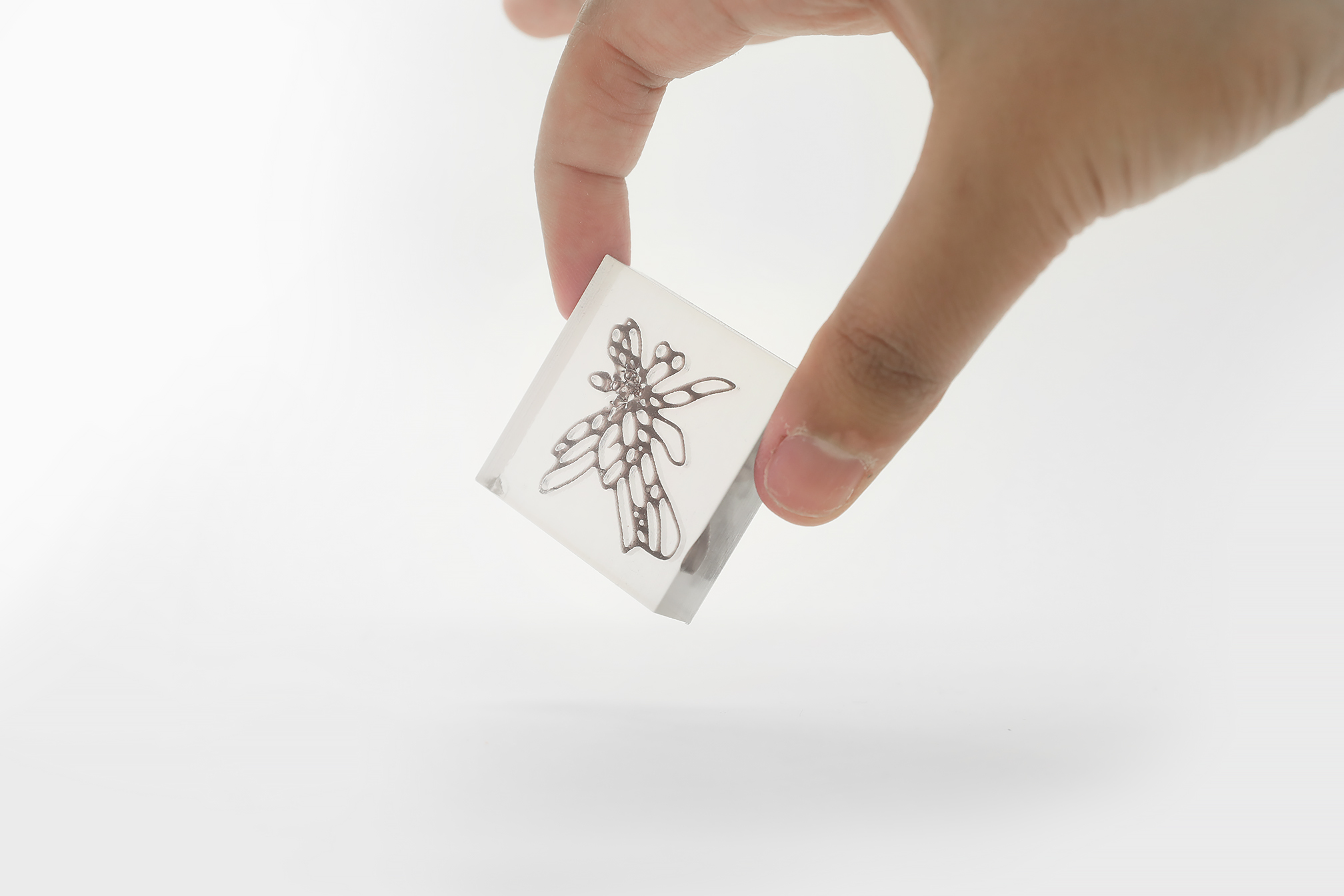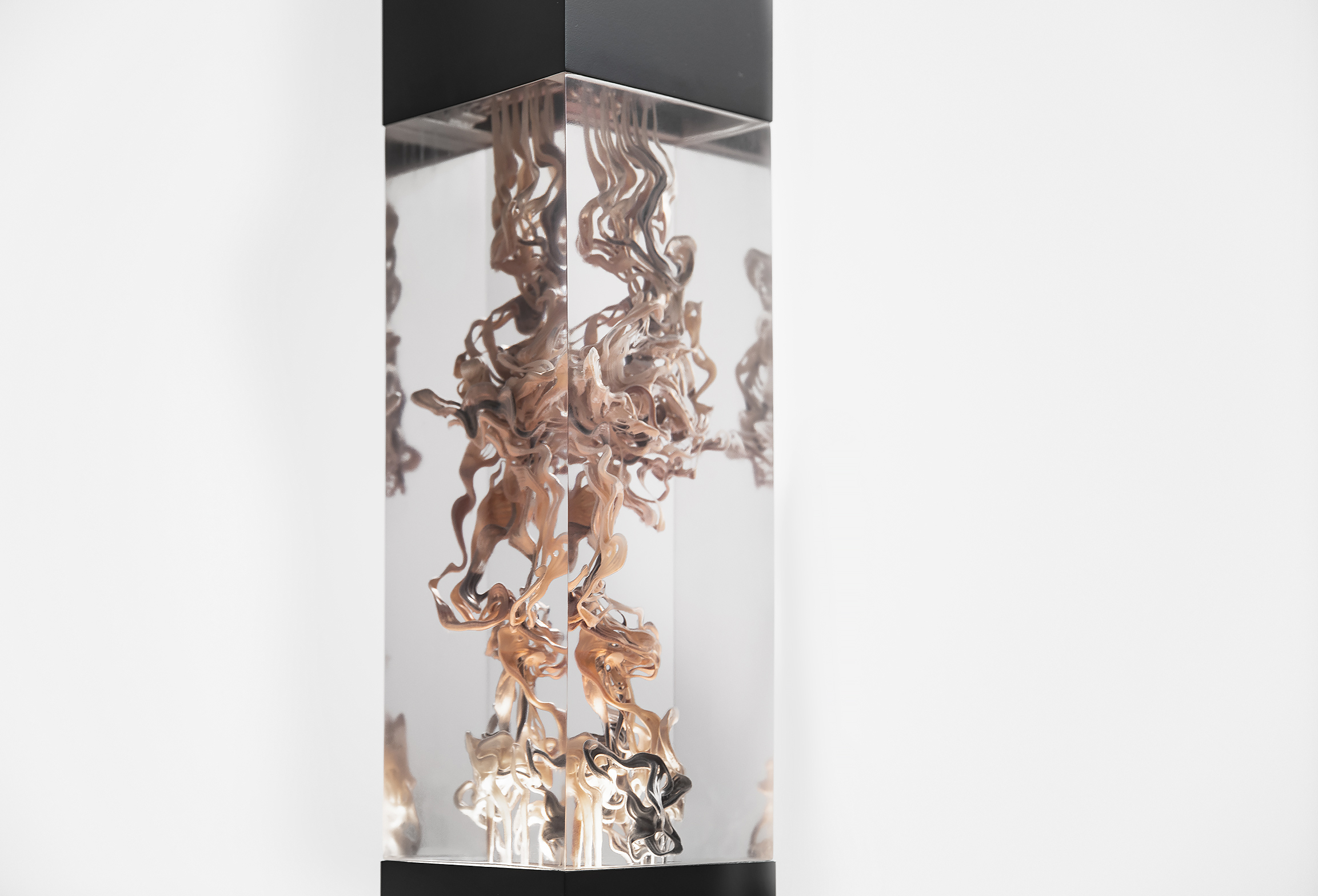Neri Oxman and the Mediated Matter Group at MIT have designed a 3D printed installation promoting biodiversity. Made for the ‘Broken Nature: Design Takes on Human Survival’ exhibition at the XXII Triennale di Milano in Milan Totems aims to explore how melanin can be generated on demand.
The installation forms part of the grander goal of the project from the Mediated Matter Group to search for “materials and chemical substances that can sustain and enhance biodiversity across living systems, and which have thus far endured the perils of climate change,” due to the current threat to biodiversity on Earth. Identifying melanin as one such substance, the project’s overview further explains:
“It is one of the most resistant, heterogeneous, and pervasive pigments found across the kingdoms of life […] Melanin’s value for human health is priceless. An intriguing vehicle for the exploration of human health and culture across regions and environments, melanin remains an identifying feature of all living organisms and is clearly linked to biological survival throughout the ages.”
The Totems installation was first introduced by Neri Oxman at the Design Indaba conference in February 2018, and is part of a long-term project initiated by Ravi Naidoo, founder of Design Indaba.

Housing liquid melanin in intricate 3D printed structures
As part of the exhibition, the Mediated Matter Group researched and developed methods to house liquid melanin across scales (from micro to macro) and phases (solids and liquids) within 3D printed structures. The structures researched came in the form of spherical objects that contained a varying amount of connected internal channels filled with the liquid melanin.
3D printing was used to produce these channels in order to create pockets from the millimeter to centimeter scale. The intricacy of the cavities, patterns, and channels within the internal geometry of the spheres were devised using generative design. These patterns aim to replicate those found in the natural world, containing five different hues of melanin extracted from various natural sources, and were digitally fabricated using a multi-material 3D printing process from Stratasys.

The Mediated Matter Group also showcase and import the liquid melanin inside clear cube and cuboid-shaped 3D printed piece. These were created to highlight the different geometries of the channels housing the liquid melanin, ranging from simple to highly complex, as part of the exhibition.
The final piece developed and researched by the Mediated Matter Group, representing the Totem itself, was 3D printed by Stratasys to house six distinct liquid channels. Melanin derived from different species occupy each pocket or channel, from bird to cuttlefish.

Neri Oxman’s 3D printed art
The Mediated Matter Group at MIT, lead by Neri Oxman, continue to pioneer the use of 3D printing in the fields of art and science. In 2017, the group conducted a fabrication experiment as part of Milan Design Week, producing 3 meter tall glass column using 3D printing. The results of the design week experiment on the potential of using glass with 3D printing was recently presented in the latest volume of 3D Printing and Additive Manufacturing journal.
In addition, the group unveiled another 3D printing project in March 2019 titled Aguahoja. This chrysalis-like sculpture features 3D printed lattices “shaped by water,” made from cellulose, chitosan and pectin, to demonstrate the possibilities of alternative, recyclable construction materials.
You can now cast your vote for the third annual 3D Printing Industry Awards. Help decide this year’s winners now.
Subscribe to the 3D Printing Industry newsletter for the latest news in additive manufacturing. You can also keep connected by following us on Twitter and liking us on Facebook.
Looking for a career in additive manufacturing? Visit 3D Printing Jobs for a selection of roles in the industry.
Featured image shows the final Totem piece, featuring six distinct liquid channels. Photo via Neri Oxman and the Mediated Matter Group.


